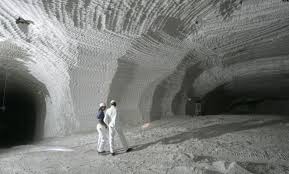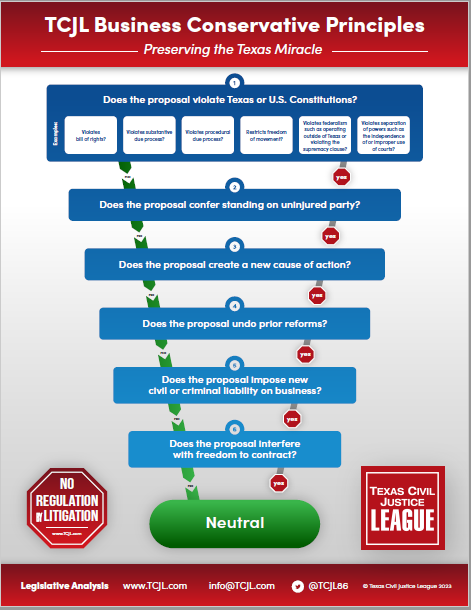 The Texas Supreme Court, largely siding with the Corpus Christi Court of Appeals, has held that a 1947 conveyance of oil, gas, and other minerals did not transfer to the mineral owner ownership of or right to use (for storing oil and gas produced offsite) empty salt caverns created by the owner’s mining activties.
The Texas Supreme Court, largely siding with the Corpus Christi Court of Appeals, has held that a 1947 conveyance of oil, gas, and other minerals did not transfer to the mineral owner ownership of or right to use (for storing oil and gas produced offsite) empty salt caverns created by the owner’s mining activties.
Myers-Woodward, LLC v. Underground Services Markham, LLC and United Brine Pipeline Company, LLC (No. 22-0878; May 16, 2025) arose from a dispute between surface owner and mineral owner over the ownership of and right to use empty caverns created within a formation by salt mining for storing oil and gas produced elsewhere. Under the original mineral deed executed in 1947, the surface owner’s predecessors transferred the mineral estate to the predecessors of Markham and United Brine. The deed reserved a perpetual 1/8 royalty on oil, gas, and other mineral production. In 2008 Markham acquired Texas Brine Company’s interest in the salt on the property. But the Markham and the surface owners failed to agree on a royalty owed on produced salt brine. This resulted in a declaratory judgment action against the royalty holders. In that action, Markham sought a declaration that its royalty obligations were satisfied by tendering 1/8th of the salt production for the well and that Markham owned the cavern space created by salt mining. Between 2015 and 2019 Markham produced more than 2.6 million tons of salt without paying any royalty. Eventually, Myers, the surface owner, filed a counterclaim to recover unpaid royalties.
In 2015 the trial court ruled that Markham owned the salt caverns but did not have the right to inject hydrocarbons and other minerals produced off-site. It ruled further that the Myers royalty owners were entitled to 1/8th royalty based on the market value of the salt at the point of production. After a dispute over the valuation of the salt, the trial court sided with Markham and entered final judgment awarding $258,850.41 to Myers. Both parties appealed. The court of appeals affirmed in part and reversed in part. On the royalty issue, the court agreed with Markham and affirmed the trial court’s calculation of the royalty. As to ownership and right to use, however, the court sided with Myers, holding that the surface owner retains ownership of the non-mineral elements of the subsurface, including empty spaces” (citations omitted). Both parties sought review, which SCOTX granted.
In an opinion by Chief Justice Blacklock, the Court affirmed in part and reversed in part. Tackling the ownership issue first, the Court looked to the 1947 conveyance. The parties agreed that Markham owned the salt by virtue of its deal with Texas Brine. They further agreed that Myers’s surface estate includes the subsurface except for “all . . . oil, gas, and other minerals.” Markham argued that the conveyance of the salt also conveyed the caverns created by removal of the salt. Turning to relevant authority, the Court observed that it has held that “the surface owner, and not the mineral lessee, owns the possessory rights to the space under the property’s surface” (citing Regency Field Servs., LLC v. Swift Energy Operating, LLC, 622 S.W.3d 807, 820 (Tex. 2021). The Court likewise pointed to the Fifth Circuit’s decision in Dunn-McCampbell Royalty Int., Inc. v. Nat’l Park Serv., 630 F.3d 431, 442 (5th Cir. 2011), which interpreted Texas law to “establish[] that the holder of the mineral estate has the right to exploit minerals, but does own the subsurface mass.”
Attempting to thread the needle, Markham sought to distinguish this and other case authority by asserting that a different rule should apply to solid minerals, such as salt or coal, which don’t migrate like oil and gas do. When those minerals are mined, the argument continued, the caverns left behind should belong to the mineral owner because the salt formation, whether full or empty, is all the same thing. Markham pointed to Mapco, Inc. v. Carter, 808 S.W.2d 262 (Tex. App.—Beaumont), rev’d in part on other grounds, 817 S.W.2d 686 (Tex. 1991), for the proposition that “the mineral estate owner retains a property interest in the underground storage caverns created by salt mining and is entitled to compensation for use of the caverns.” Id. At 277-78. The Court, however, didn’t bite on this. “We do not find Mapco’s reasoning persuasive,” the Chief Justice wrote, “and to the extent it is inconsistent with our holding today, it is overruled.”
Still, the Court hesitated to make any hard and fast rules about ownership because the terms of the conveyance must still be consulted. Here, the 1947 deed gave Markham ownership of the salt, but not the salt formations or, for that matter, any “non-salt substances or spaces adjacent to the salt.” In other words, Justice Blacklock opined, “[n]o matter who created the underground empty space or where it is located, the space itself is not salt, which means that the mineral estate generally does not entail physical ownership of it (absent some indication to the contrary in the conveyance, which we do not see here).” The rule should be the same for underground storage space created by mining solid minerals and space “encased in non-mineral rock formations.” The salt cavern belongs to the surface estate and thus to Myers.
Next, the Court took up Myers claim that it had the right to use the caverns to store oil and gas produced offsite. To the extent that Myers needed to use the caverns (i.e., the surface estate) to produce and remove minerals, Texas law gave them that right because the law considers the mineral estate dominant. But the qualified right to make reasonable use of the surface estate to produce minerals does not extend to using the estate to store hydrocarbons produced somewhere else. As the Court pointed out, “it seems [] likely that storage of hydrocarbons within salt caverns would hinder, rather than facilitate, further production of the salt. Such a storage operation would likely entail invasive uses of the surface estate as well.” Texas law makes such invasive use impermissible, because “ownership of the mineral estate does not entitle ‘the mineral owner to increase the burden on the surface estate for the benefit of additional lands’” (citation omitted). Even so, since Markham failed to establish it owned the salt caverns in the first place, it “cannot establish a right to use the salt caverns because its proposed use of them has no connection to the production of salt on the property.” The court of appeals was affirmed.
As to the royalty dispute, the Court reversed the court of appeals. Myers sought 1/8th of the net proceeds from the actual sale of the salt, which came to more than $2 million. Markham countered with the $200,000 or so calculated by the trial court, which was based on the alleged “market value” of the salt. Noting the the Court’s precedent ordinarily “assumes that there is generally some connection between the two measures, such that one can often yield a useful approximation of the other,” the Chief Justice looked at the vast divergence of the valuation methods of a relatively stable market for salt as “remarkable.” Returning to the language of the 1947 conveyance and subsequent correction deed, the Court concluded that Myers’ royalty was payable in-kind, that is, 1/8th of the “actual, physical salt removed from the ground on its property.” Observing that the parties agreed that the 1947 deed conveyed an in-kind royalty on oil (based on the language tying the oil to “delivery” at the wells), the question because whether the 1947 correction deed conveyed a different kind of royalty for gas and other minerals. The Court answered “no” to this question: the parties’ intent as expressed in these documents conveyed the same interest for all minerals. In fact, the reason the parties executed the correction deed in the first place was because “they had inadvertently neglected to include gas and other minerals in the in-kind royalty created by the original deed.” The Court sent the case back to the trial court for a redetermination of the amount of royalties owed by Myers.
This is obviously an excellent outcome for surface owners who are sitting on salt caverns or other empty spaces vacated by mining activities. At the same time, the language of the 1947 conveyance was decisive here. The broader legal principles already existed, and the Court was unwilling to accept Markham’s argument that solid and liquid minerals should be treated differently.











